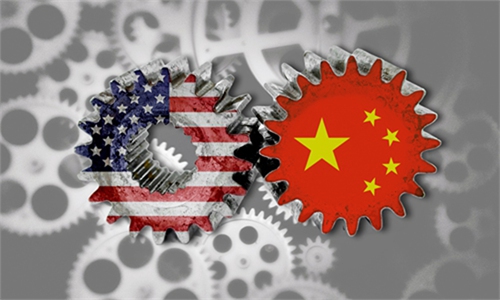
Integrated circuit Illustration: VCG
The US House of Representatives passed a $1.2 trillion bipartisan infrastructure bill late Friday aimed at modernizing the country's infrastructure, including roads, bridges, ports, water lines, and broadband, marking the largest public infrastructure spending package in history.Last week, US Trade Representative Katherine Tai told US steel industry executives that the bipartisan infrastructure deal "features strong Buy America provisions to ensure that all projects will be built with American iron and steel."
Yet, an awkward reality is that the hollowing-out of the US manufacturing sector means that its domestic industries don't have the production capacity to support the "once-in-a generation" infrastructure construction.
While the Biden administration may not necessarily want to increase imports from China to support the infrastructure plan, no other country except China can meet its need for large amount of industrial goods under such a grand infrastructure program.
In 2020, China's infrastructure-related exports to the US totaled about $295 billion, accounting for about 63 percent of its total exports to the US, according to a research report by China International Capital Corp. Therefore, the expansion of US infrastructure investment will inevitably lead to the increased imports from China.
This outcome will only increase US' trade deficit with China. China's trade surplus with the US reached $40.75 billion in October, showed customs data on Sunday. While the figure was down from the monthly high of $42 billion recorded in September, it remains on a relatively high level despite the US' attempt to narrow its trade deficit.
While US politicians repeatedly claim the government needs to reduce trade deficit by cracking down on the so-called unfair, non-market trade practices, it is the massive demand in the US for foreign goods that contributes to its trade deficit.
For instance, the COVID-19 pandemic has boosted US consumption of Chinese products such as medical goods, toys and clothes, driving up Chinese exports to the country. As the US economy recovers from the worst of the pandemic, such demand will only increase, and the US is unlikely to find any other import source that can sufficiently replace China.
In the meantime, China is also looking for ways to expand imports, as demonstrated by the ongoing China International Import Expo, the world's largest import fair. As the world's major exporter of consumer goods, China needs to import a lot of technology like chips to support its domestic supply chains, but since the US restricted high-tech exports to China, industrial chains have been affected. Such disruption to the supply chain is not in the interest of China, nor of the US, as US tech companies also lost businesses. And a continued tech decoupling will only lead to more growing US deficit with China.
China is placing big orders for US agricultural and energy products, but it is impossible for both countries to rely just on the Chinese purchases of US soybeans and LNG to narrow the trade deficit.
With the passage of the $1.2 trillion infrastructure bill, the urgency for the US to lift its tech export restrictions against China will increase. Only by accelerating the exports of high value-added tech products to China can the trade imbalance be eased, which is also in line with the fundamental spirit of the phase one trade deal.



